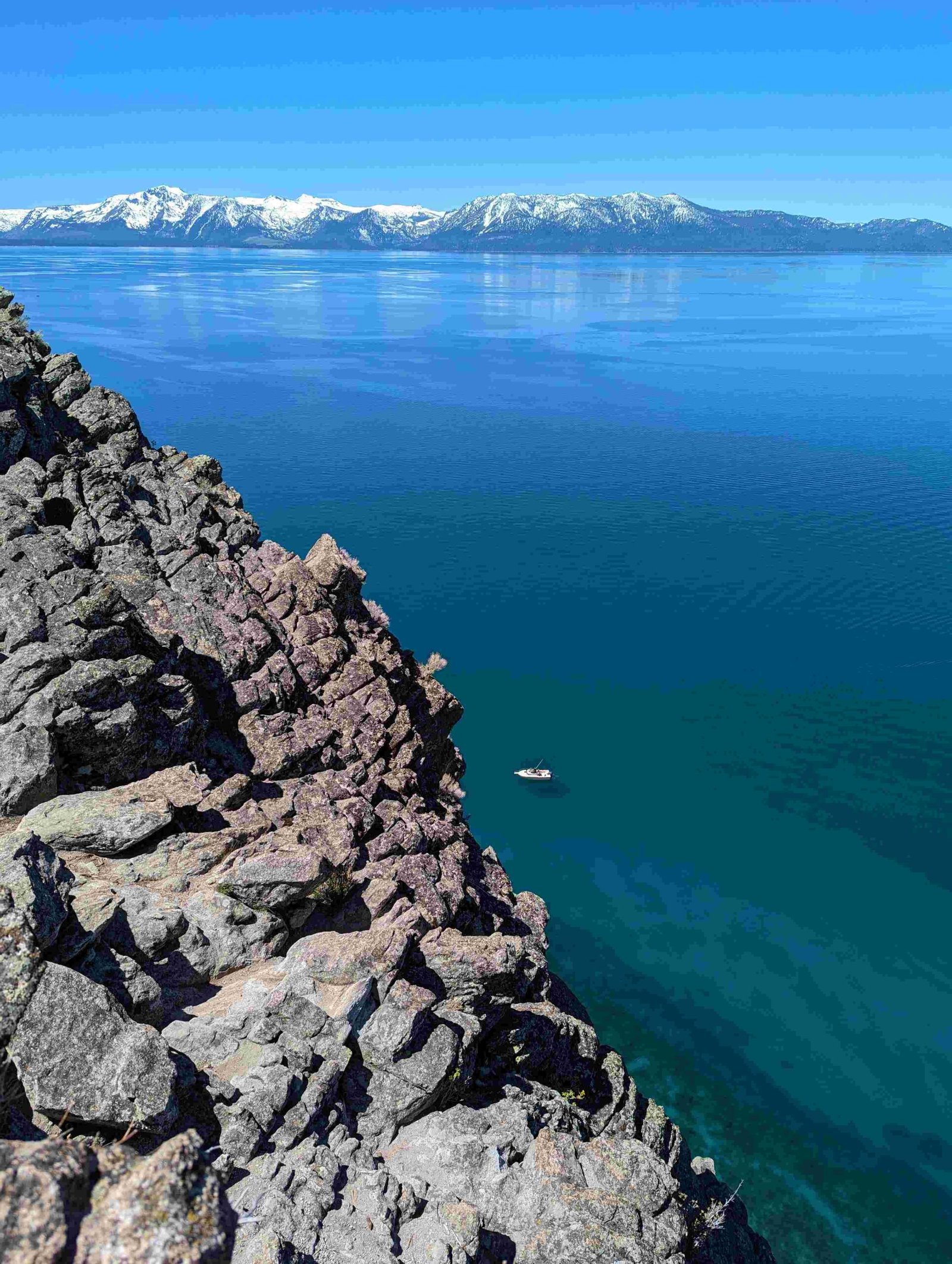Lake Tahoe, renowned for its crystal-clear waters and stunning alpine setting, is often the subject of depth-related inquiries. While it’s undoubtedly deep, the question remains: is Lake Tahoe the deepest lake? This article delves into Lake Tahoe’s impressive depths, comparing it to other deep lakes in the USA and the world’s oceans, and exploring how its elevation impacts its unique characteristics.
What is the Maximum Depth of Lake Tahoe?

Lake Tahoe plunges to a maximum depth of 1,645 feet (501 meters), making it an impressively deep body of water. This depth is equivalent to stacking nearly five Statues of Liberty underwater! However, despite its considerable depth, Lake Tahoe is not the deepest lake in the United States.
How Does Lake Tahoe Compare to Other Deep Lakes in the USA?

When ranking the deepest lakes in the United States, Lake Tahoe holds the prestigious second position. Here’s how it stacks up against other deep lakes:
- Crater Lake, Oregon: 1,949 feet (594 meters)
- Lake Tahoe, California/Nevada: 1,645 feet (501 meters)
- Lake Chelan, Washington: 1,486 feet (453 meters)
- Lake Superior, Michigan/Minnesota/Wisconsin: 1,332 feet (406 meters)
As we can see, while Lake Tahoe is impressively deep, it falls short of claiming the title of the deepest lake in the USA.
Where Does Lake Tahoe Rank Among North America’s Deepest Lakes?
In the context of North America, Lake Tahoe maintains a respectable position:
- Great Slave Lake, Canada: 2,015 feet (614 meters)
- Crater Lake, USA: 1,949 feet (594 meters)
- Lake Pend Oreille, USA: 1,158 feet (353 meters)
- Lake Tahoe, USA: 1,645 feet (501 meters)
This ranking places Lake Tahoe as the fourth deepest lake in North America, showcasing its significant depth on a continental scale.
How Does Lake Tahoe’s Depth Compare to the Average Ocean Depth?
While Lake Tahoe is undoubtedly deep for a freshwater lake, it pales in comparison to the vast depths of the world’s oceans:
- Average ocean depth: 12,416 feet (3,785 meters)
- Lake Tahoe’s maximum depth: 1,645 feet (501 meters)
To put this into perspective:
| Body of Water | Depth (feet) | Depth (meters) |
|---|---|---|
| Average Ocean | 12,416 | 3,785 |
| Lake Tahoe | 1,645 | 501 |
Lake Tahoe’s maximum depth is less than one-seventh of the average ocean depth. The contrast becomes even more stark when comparing it to the deepest part of the ocean, the Challenger Deep in the Mariana Trench, which plunges to about 36,000 feet (10,973 meters) – more than 22 times deeper than Lake Tahoe!
What Impact Does Lake Tahoe’s Elevation Have on Its Depth?
Lake Tahoe’s unique characteristics are not solely due to its depth but also its high elevation. Situated at 6,225 feet (1,897 meters) above sea level, Lake Tahoe’s elevation contributes significantly to its formation and properties:
- Water Clarity: The high elevation results in colder temperatures and less organic matter, contributing to Lake Tahoe’s famous clarity.
- Freezing Patterns: Despite its depth, the high elevation means that certain areas of the lake occasionally freeze during particularly cold winters.
- Geological Formation: Lake Tahoe’s basin was formed by a combination of faulting, volcanic activity, and glaciation at high altitudes, resulting in its deep, clear waters.
Why is Lake Tahoe’s Depth Significant?
While Lake Tahoe may not be the deepest lake in the USA or the world, its depth is still remarkable and contributes to several important factors:
- Water Volume: Lake Tahoe contains about 39 trillion gallons of water, enough to cover the entire state of California to a depth of 14 inches.
- Ecosystem: The lake’s depth supports a diverse aquatic ecosystem, including native species like the Lahontan cutthroat trout.
- Climate Impact: The large volume of water acts as a heat sink, moderating the local climate and influencing weather patterns in the surrounding area.
- Recreation: The depth allows for various water activities, from deep-water fishing to scuba diving.
What Are Some Interesting Facts About Lake Tahoe’s Depth?
To truly appreciate Lake Tahoe’s depth, consider these fascinating facts:
- If drained, it would take about 700 years to refill naturally from precipitation and runoff.
- The water clarity is so exceptional that a white dinner plate would be visible up to 70 feet below the surface.
- Due to its depth and cold temperatures, bodies that sink to the bottom of Lake Tahoe may never resurface, as the conditions can preserve them indefinitely.
In conclusion, while Lake Tahoe is not the deepest lake in the USA or the world, its impressive depth of 1,645 feet combined with its high elevation and crystal-clear waters make it a unique and remarkable natural wonder. Whether you’re a geology enthusiast, a water sports lover, or simply someone who appreciates the beauty of nature, Lake Tahoe’s depths offer a fascinating subject for exploration and admiration.

